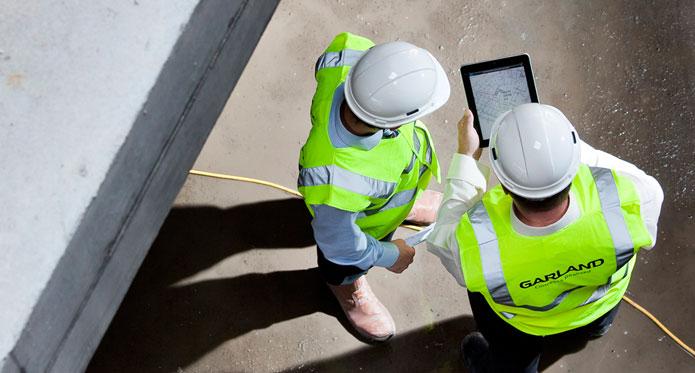Construction is one of the most dangerous environments to work in due to the sheer number of hazards that labourers are faced with on a daily basis. Those responsible for managing a construction site have a number of legal and moral obligations to meet in order to look after the health of the employees working on the site.
In 1974, the Health and Safety Act was created and it placed responsibility on employers to protect the personnel that worked for them. Bosses were forced to put necessary safety measures in place, which lessened the possibility of illness, injury or even death of their staff. The Act, which is still in use today, is also applicable to site visitors and even members of the public who are situated near to a construction site.
However, the Health and Safety Act does not completely absolve employees from accountability and it also promotes worker awareness towards acting safely and responsibly in the workplace in order to protect both themselves and their colleagues from accidents.


Health and safety regulations can often be viewed in a negative light, with many thinking that they represent a waste of time. However, safety guidelines in the construction industry can not only save lives, but can also contribute to a more efficient site. When accidents do occur in the workplace, a great deal of time and expense is spent dealing with the aftermath of the incident. This may include costly appointments with lawyers, court cases and re-examination of workforce policies on an ad hoc basis. Businesses that have chosen to train their staff and adhere to strict health and safety guidelines should find that both they and their staff are well-versed in basic procedures which should allow construction operations to flow smoothly with minimum disruption to their work rate.
Furthermore, studies show that employees working for a construction business with adequate health and safety measures feel happy that their employer is serious about their personal safety and staff are more productive as a result.
Site Management Training Courses exist to give knowledge and skills to those who are in charge of managing or setting up a construction site, as well as the team working on it. Those who would benefit from this type of specialised tuition include:
Quality SMSTS training courses typically last for 5 days and cover topics such as risk assessment of a construction site, scaffolding security, working in confined spaces, fire and electricity safety, asbestos control, excavations, working at heights and appropriate safe use of work equipment.
Courses should include exercises as well as an examination at the end of the training. A Construction Site Manager’s Certificate will be awarded upon successful completion of a course and is valid for 5 years. However, as working conditions, legislation and technology change so frequently in the construction industry, it is normally recommended that course attendees take a refresher course no more than 3 years after the initial training course has been completed.
Construction company managers should always invest money in the training of health and safety procedures. If a construction workforce feels secure and protected from injury, then they are less likely to look elsewhere for employment, meaning that there are fewer interruptions caused by recruiting new staff to an operation, and consequently less money is required to spend on overall training.
Glen Hughes is the director of Zero Harm Training, who provide safety & environmental training courses across the UK and internationally.
You must be logged in to post a comment.